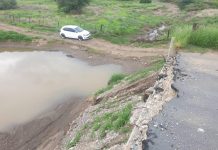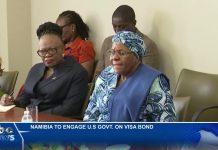Africa-Press – Namibia. ZAMBEZI IS THE wettest region in Namibia. It is abundantly rich in natural resources. Its dense evergreen forest is home to diverse and abundant indigenous fauna and flora.
Its soil is kept fertile and nutrient-rich by the Zambezi River, which has smaller tributaries, namely the Chobe and Linyanti. These make the Zambezi home to diverse aquatic species that form primary sources of livelihood for local communities.
With such a wealth of natural resources, it is not surprising that the region attracts local and foreign investors. Although these investments benefit Namibia, the same cannot be said of the communities who inherited the land from their ancestors. Is there no way Zambezi’s natural resources can be made to contribute to the livelihood of communities in the region as well as the national economy?
It is possible but only if the region’s natural resources are explored, processed and used for sustainable development. In this way, local communities are engaged as the most affected stakeholders. Local stakeholders are the most affected because whatever happens in the Zambezi region affects them directly, not people in Windhoek and other parts of Namibia.
Accessing natural resources in the region based on sustainable development is essential because sustainable development is about recognising the interests of all (including the heritage from our ancestors, the living conditions of the living and the potential needs of those yet to be born). To achieve sustainable development in Namibia using resources from the Zambezi region, it is crucial to understand the link between land and sustainable development.
COMMUNITIES At present, natural resource exploitation ignores the interests of local communities. This is dangerous for local, regional and national development. Local communities lose their livelihoods and homes/land, while foreign investors pocket large amounts of money from the exploitation of natural
resources at the expense of these communities. The region’s fauna and flora are increasingly endangered. Some are already extinct, and environmental degradation is a regular occurrence.
This is why natural resource management through government-assisted interventions such as community-based natural resource management (CBNRM) is urgently needed. CBNRM is a land-based and people-centred approach that aims to conserve and develop natural resources to overcome poverty and hunger in local communities. Management of natural resources is an essential value addition component to empower local communities by encouraging and initiating ways to recognise and understand natural resources unique to their region and create business and employment opportunities.
There is also a heritage factor – the land. The land fosters the human-land-water and forest relationship of communities. There is a need to maintain a balance in the use of Zambezi’s land, water and forests that benefits the people without destroying their environment.
A well-defined structure on land ownership or land rights is crucial for sustaining a balance in this relationship. However, this requires clear ownership of natural resources to allow for healthy competition for the limited resources within local communities. It also means that the government, traditional leaders, and foreign investors should see communities as equal partners in the development process. LAND TENURE
The link between forest and land is tenure security. Land tenure security implies protection against evictions or the denial of people’s land rights. Improving tenure security in the region is essential for sustainable development. It is important because it protects communities’ land, water and forest rights (and other resources embedded in them). It empowers people to make decisions on and participate in managing natural resources that directly or indirectly affect their livelihoods.
In addition, the human factor is multi-layered and complex because of the gender issue. The historical and present experiences of women and men on land access, ownership and economic progress are unequal. Historically, women have been marginalised and discriminated against, excluding them from economic progression.
Integration of sectors, organisations and academic and practice disciplines is imperative in achieving the three pillars of sustainable development – society, economy, and environment. They are interconnected. The economy is usually prioritised in policies. The environment is sometimes viewed separately from the human/society aspect, although, in essence, the economy depends on communities, and both are dependent on the environment. The separation of these pillars often leads to incomplete development. This results in some communities being marginalised, and it broadens the inequality and poverty gap.
Secure access to and ownership of land in any context, supported by CBNRM, will ensure that Zambezi’s resources benefit all Namibians, including local communities. However, it must be supported by all stakeholders for the benefit of the people.
For More News And Analysis About Namibia Follow Africa-Press






